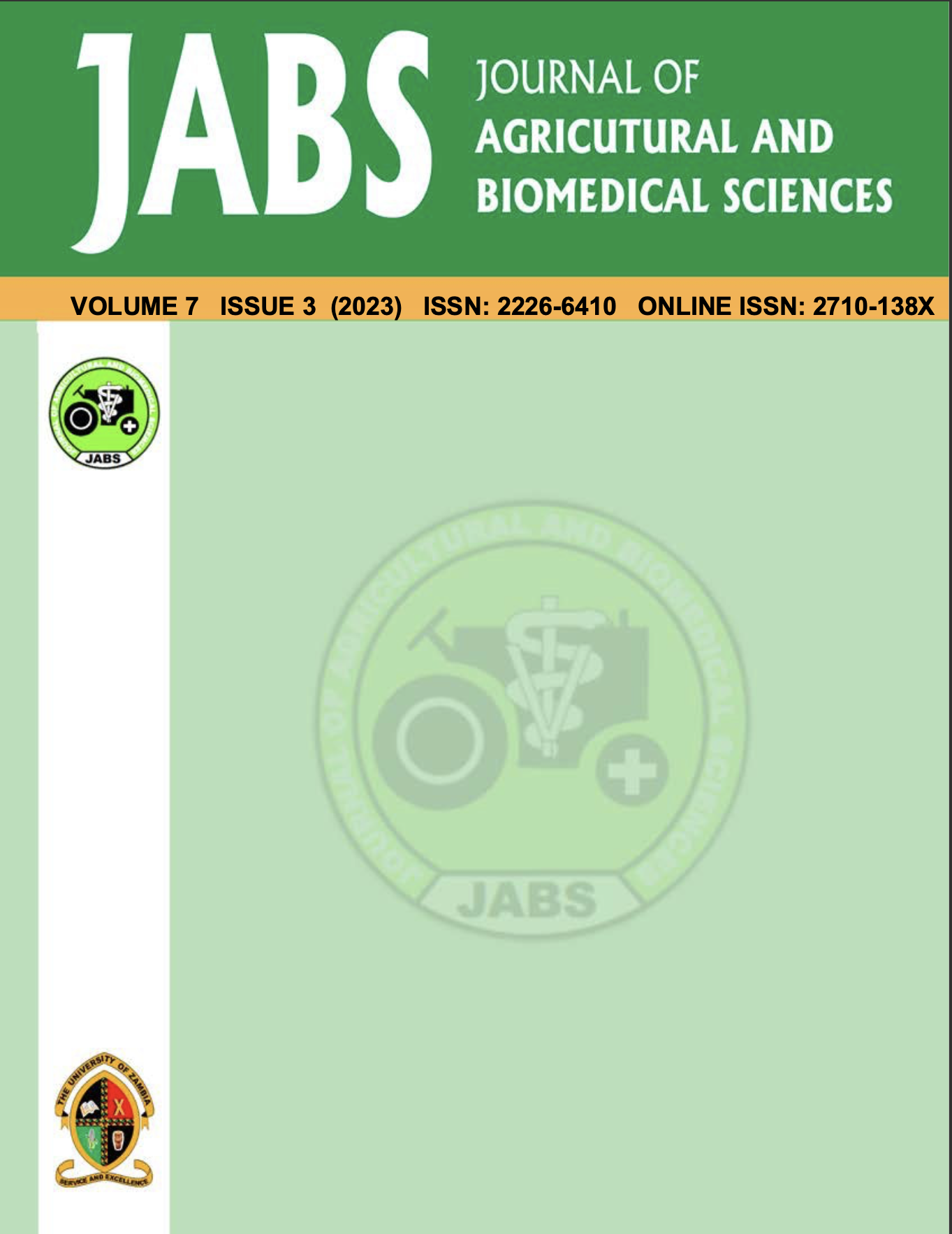Health Benefits of Exclusive Breastfeeding on Children as Perceived by Pregnant Women in Ilorin South LGA, Kwara State, Nigeria
Keywords:
Health-benefits, Exclusive, Breast-feeding, Pregnant-women, Children
Abstract
Breastfeeding aids general health growth and development in the infant. The study is designed to examine the impact of exclusive breastfeeding on the health of children as perceived by nursing mothers in Ilorin South LGA, Kwara State. The objective of the study was to examine if exclusive breastfeeding reduces infant mortality or promotes rapid growth and development in children as perceived by pregnant women in Ilorin South LGA, Kwara State, Nigeria. A descriptive research design of the survey type was adopted. A multistage sampling technique was used for the study. Four hundred (400) respondents were sampled for the study. A researcher-structured questionnaire which was validated and tested for reliability was adopted for the study. The instrument was administered by the researchers and supported by the research assistants. The data collected for the study analysed using the inferential statistics of chi-square was used to analyse the hypotheses postulated for this study at 0.05 alpha level. The findings revealed that exclusive breastfeeding reduced infant mortality as perceived by pregnant women with the calc. x2 value of 881.17 is > the critical value of 16.92 at the degree of freedom of 9 @ 0.05 alpha level. Exclusive breastfeeding promotes physical growth and development in infants as perceived by pregnant women with the calc. x2 value of 856.62 is > the critical value of 16.92 at the degree of freedom of 9 @ 0.05 alpha level. Based on the findings, it was concluded that exclusive breastfeeding reduced infant mortality and it promote physical growth and development. The researchers recommended among others that the Primary Health Care Development Agency in Ilorin South Local Government should create specific programmes aimed at educating pregnant women about the advantages of exclusive breastfeeding. This is to decrease the rate of infant mortality in the area under study.References
Abidah, S.N. & Novianti, H. (2020). Effect of exclusive breastfeeding on growth and development of infants aged 0-24 months. https://www.researchgate.net/publication/354635135_EFFECT_OF_EXCLUSIVE_BREASTFEEDING_ON_GROWTH_AND_DEVELOPMENT_OF_INFANTS_AGED_0-24_MONTHS
Adejoro, L. (2022). Over 70% of Nigerian infants denied exclusive breastfeeding. Available at:
https://punchng.com/over-70-of-nigerian-infants-denied-exclusive-breastfeeding/
Agho, K.E., Dibley, M.J.,Odiase, J. J.& Ogbonmwan, S.M. (2011). Determinants of exclusive breastfeeding in Nigeria. https://bmcpregnancychildbirth.biomedcentral.com/articles/10.1186/1471-2393-11-2
American Academy of Pediatrics. (2012). Human Milk In Pickering LK. Red Book: 2003 Report of the Committee on Infectious Diseases. 26th ed. Elk Grove Village, IL: American Academy of Pediatrics; 12(8):16-32.
Bai, J., Middlestadt, I., Peng, T. & Fly, R. (2009). Breastfeeding reduces the risk of gastrointestinal infection. Committee on Nutrition, 41, 2, 223.
Chung, M., Raman, G., Chew, P., Magula, N., DeVine, D., Trikalinos, T., Lau, J. (2007). Breastfeeding and maternal and infant health outcomes in developed countries. [http://www.ahrq.gov/downloads/pub/evidence/pdf/brfout/brfout.pdf]
Jones, I., Steketee, I., Black, L., Bhutta, A. & Morris, E. (2003). Exclusive breastfeeding and its benefits. European Journal of Pediatrics. Doi:10.1002/14651858.CD003517. pub2. PMID 22895934.
Joseph, F., I., Earland, J. (2019). A qualitative exploration of the socio-cultural determinants of exclusive breastfeeding practices among rural mothers, North West Nigeria.
https://internationalbreastfeedingjournal.biomedcentral.com/articles/10.1186/s13006-019-0231-z
Kramer, M.S. & Kakuna, R. (2012). Optimal duration of exclusive breastfeeding. The Cochrane Database of Systematic Reviews. 8(8): CD003517. Doi:10.1002/14651858.CD003517. pub2. PMID 22895934.
Lauer, Y., Betrán, E., Barros, E.& de Onís, T. (2006).Influence of breastfeeding on mortality rates. Am J ClinNutr; 60:189–94.
Nkala, M.&Msuya, J.(2011). Exclusive breastfeeding: meaning. Breastfeeding Review: Professional Publication of the Nursing Mothers’ Association of Australia;14(1):15-23.
Research Advisor (2006).Sample size table. Available at: https: //www.researchadvisors.com/tools/samplesize.htm.
Victora, C.G., Bahl, R., Barros, A.J., Franca, G.V., Horton, S., Krasevec, J., Murch, S., Sankar, M.J., Walker, N. & Rollins, N.C. (2016). Breastfeeding in the 21st century: epidemiology, mechanisms, and lifelong effect. Lancet. 387 (10017): 475-90. Doi:10.1016/s0140-67361(15)01024-7. PMID 26869575.
World Health Organization (2021). Infant and young child feeding. Available at: https://www.who.int/news-room/fact-sheets/detail/infant-and-young-child-feeding
Adejoro, L. (2022). Over 70% of Nigerian infants denied exclusive breastfeeding. Available at:
https://punchng.com/over-70-of-nigerian-infants-denied-exclusive-breastfeeding/
Agho, K.E., Dibley, M.J.,Odiase, J. J.& Ogbonmwan, S.M. (2011). Determinants of exclusive breastfeeding in Nigeria. https://bmcpregnancychildbirth.biomedcentral.com/articles/10.1186/1471-2393-11-2
American Academy of Pediatrics. (2012). Human Milk In Pickering LK. Red Book: 2003 Report of the Committee on Infectious Diseases. 26th ed. Elk Grove Village, IL: American Academy of Pediatrics; 12(8):16-32.
Bai, J., Middlestadt, I., Peng, T. & Fly, R. (2009). Breastfeeding reduces the risk of gastrointestinal infection. Committee on Nutrition, 41, 2, 223.
Chung, M., Raman, G., Chew, P., Magula, N., DeVine, D., Trikalinos, T., Lau, J. (2007). Breastfeeding and maternal and infant health outcomes in developed countries. [http://www.ahrq.gov/downloads/pub/evidence/pdf/brfout/brfout.pdf]
Jones, I., Steketee, I., Black, L., Bhutta, A. & Morris, E. (2003). Exclusive breastfeeding and its benefits. European Journal of Pediatrics. Doi:10.1002/14651858.CD003517. pub2. PMID 22895934.
Joseph, F., I., Earland, J. (2019). A qualitative exploration of the socio-cultural determinants of exclusive breastfeeding practices among rural mothers, North West Nigeria.
https://internationalbreastfeedingjournal.biomedcentral.com/articles/10.1186/s13006-019-0231-z
Kramer, M.S. & Kakuna, R. (2012). Optimal duration of exclusive breastfeeding. The Cochrane Database of Systematic Reviews. 8(8): CD003517. Doi:10.1002/14651858.CD003517. pub2. PMID 22895934.
Lauer, Y., Betrán, E., Barros, E.& de Onís, T. (2006).Influence of breastfeeding on mortality rates. Am J ClinNutr; 60:189–94.
Nkala, M.&Msuya, J.(2011). Exclusive breastfeeding: meaning. Breastfeeding Review: Professional Publication of the Nursing Mothers’ Association of Australia;14(1):15-23.
Research Advisor (2006).Sample size table. Available at: https: //www.researchadvisors.com/tools/samplesize.htm.
Victora, C.G., Bahl, R., Barros, A.J., Franca, G.V., Horton, S., Krasevec, J., Murch, S., Sankar, M.J., Walker, N. & Rollins, N.C. (2016). Breastfeeding in the 21st century: epidemiology, mechanisms, and lifelong effect. Lancet. 387 (10017): 475-90. Doi:10.1016/s0140-67361(15)01024-7. PMID 26869575.
World Health Organization (2021). Infant and young child feeding. Available at: https://www.who.int/news-room/fact-sheets/detail/infant-and-young-child-feeding
Published
2024-05-07
How to Cite
1.
Ologele I, Abubakar B, Jidda K, Abdulrasaq QO, Gideon F, Kperogi I. Health Benefits of Exclusive Breastfeeding on Children as Perceived by Pregnant Women in Ilorin South LGA, Kwara State, Nigeria. Journal of Agricultural and Biomedical Sciences [Internet]. 7May2024 [cited 19Apr.2025];7(3). Available from: https://nscme.unza.zm/index.php/JABS/article/view/1150
Section
General
Copyright: ©️ JABS. Articles in this journal are distributed under the terms of the Creative Commons Attribution License Creative Commons Attribution License (CC BY), which permits unrestricted use, distribution, and reproduction in any medium, provided the original author and source are credited.

